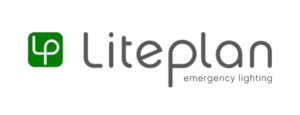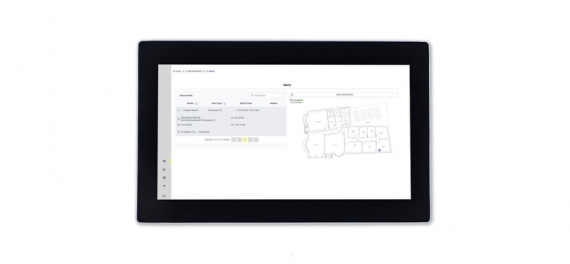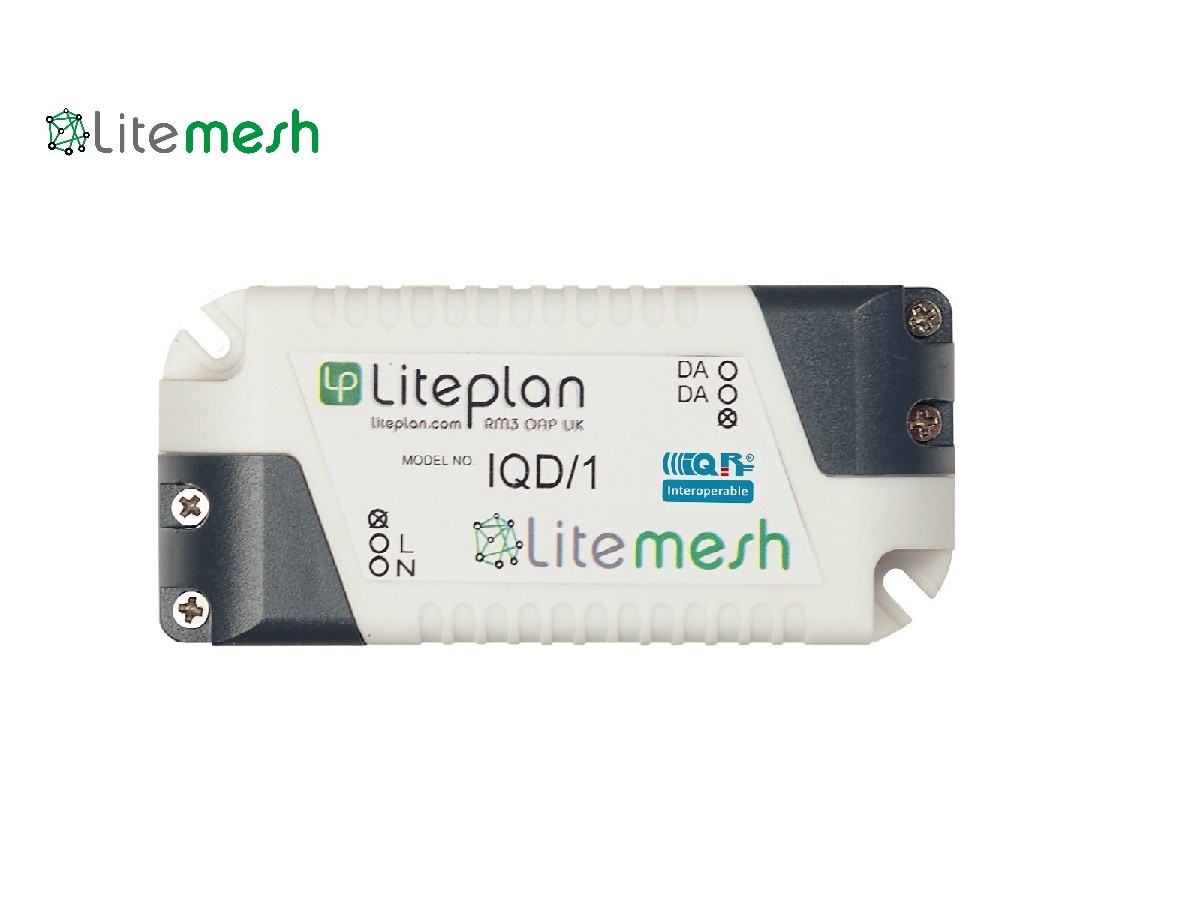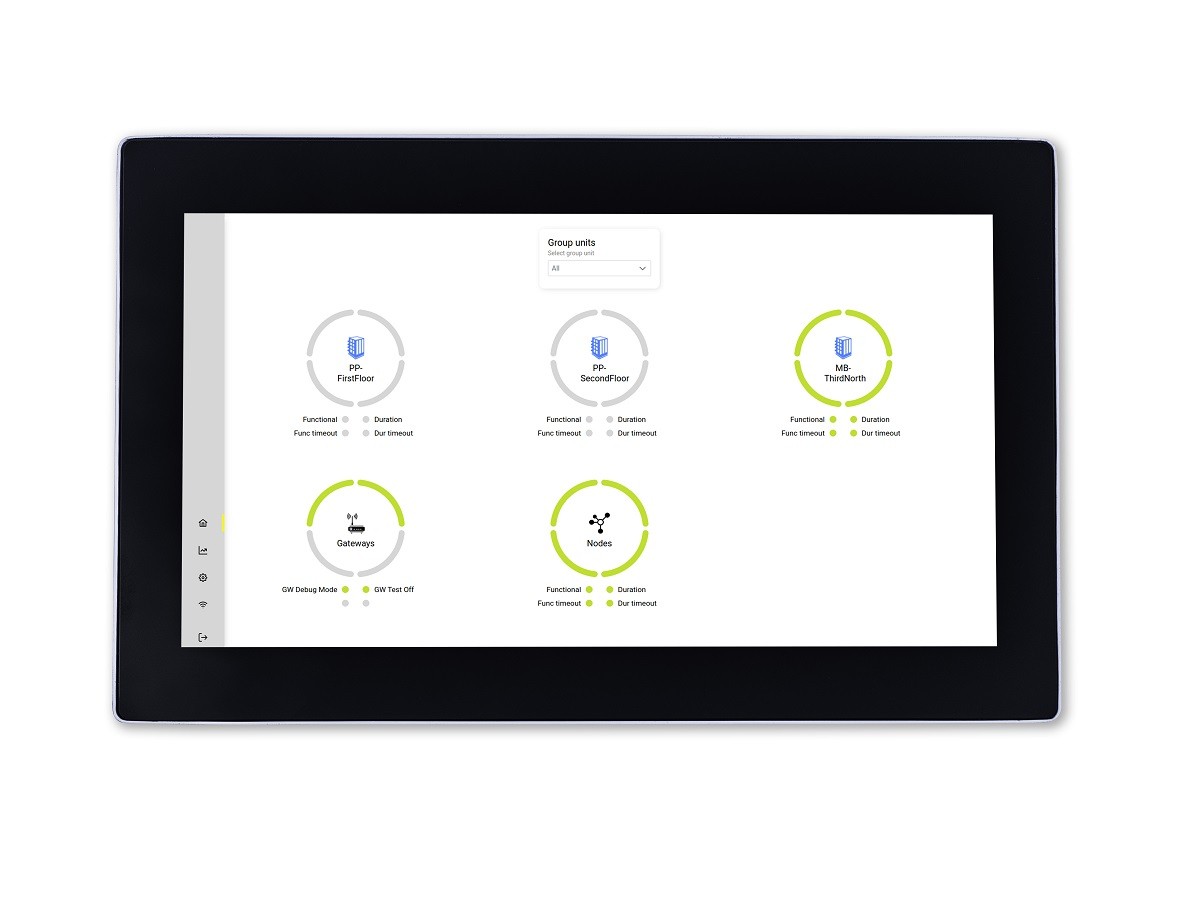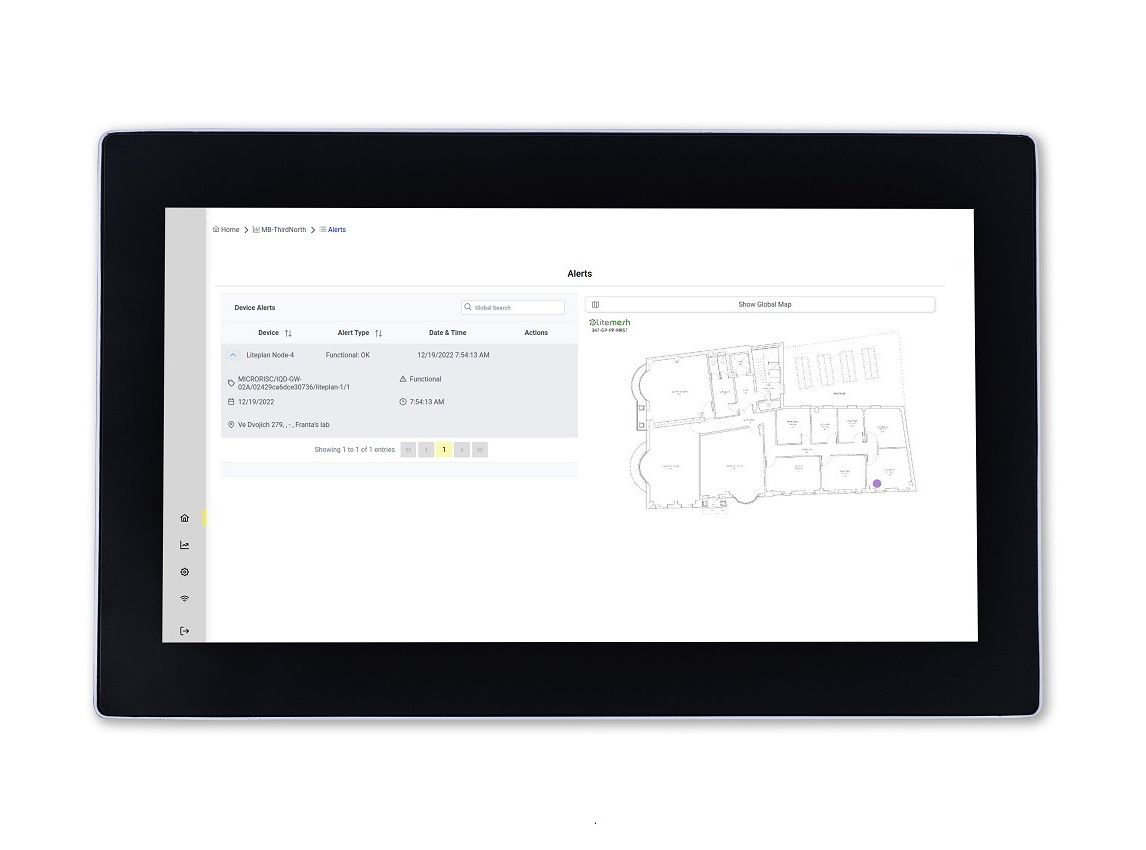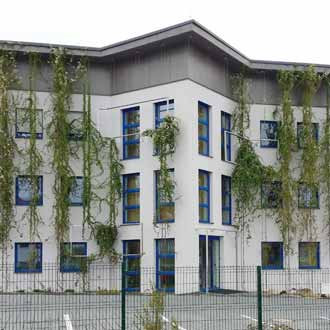Solution
For emergency lighting, it is mandatory to regularly check the condition of the backup battery. For this purpose, IQRF® wireless technology with its parameters appears to be optimal.
The luminaires are equipped with a wireless IQRF® bridge, through which the central application communicates with the luminaires. Control commands are sent from it, for obtaining the status of the lamp or its battery or for its identification.
Deploying the lights network in a building is easy. Using automatic network construction, an automatic reliable mesh topology is created.
The management application allows you to locate the lights in the building and display their location and status on the floorplan.
Specifically for emergency lighting installations, the IQD/1 is Liteplan's wireless bridge node connecting DALI emergency control gear to the LiteMesh system. The mesh topology utilises an 868 MHz frequency making it perfect for emergency lighting installations with an extremely long range. The security is multilayer, using AES-128 and dynamic keys. The IQD/1 node connects to DALI emergency control gear via standard two-way DALI terminals. The mesh can be scaled to monitor the status of small multi-site retail schemes, to much larger commercial, hospitality, retail, or education projects.
LiteMesh® is Liteplan's wireless emergency lighting operating system that gathers data from DALI-compliant emergency lighting control gear. The system creates a secure, robust mesh using IQRF's 868 MHz long-range mesh technology.
Local or Cloud
For LiteMesh-Cloud, data is sent via the cloud to a browser-based user interface portal. This portal features a simple floor plan layout of each level of the building showing the exact location of each emergency light fitting or exit sign.
For LiteMesh-Local, data is displayed on a local screen, again, in a simple-to-navigate floorplan format.
As the DALI control gear carries out its function test monthly and duration test on an annual basis, compliance reports are generated and held at the portal, or local screen.
With LiteMesh-Cloud, these reports can be sent to multiple email addresses. These reports can be sent to various individuals, but are also securely held for five years.
Floorplan
In addition to this, real-time fault reporting is also generated, indicating what part requires replacement and its exact location, allowing for a fix first-time resolution.
One of the main features of the system is the installer-led commissioning tool. This strong, contractor-friendly tablet, features the LiteWork software that allows the scheme to be commissioned in a fraction of the time of traditional emergency lighting monitoring systems. Each emergency light fitting or exit sign is placed onto the pre-installed floorplan as its operator navigates their way around the building. Once this plot has been completed, the information is automatically sent directly to the portal via the cloud. Grouping and scheduling of emergency lighting tests are handled via the user of either the portal or the local touchscreen, minimizing time spent on site.
